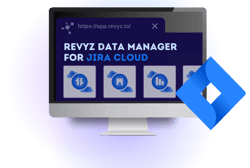Will a Lack of Cloud Disaster Recovery Capability Be the Reason You Fail Your Next Federal Compliance Review?
Introduction
As federal agencies continue their digital transformation, moving critical operations and data to the cloud, the importance of robust disaster recovery capabilities cannot be overstated. In an era where data breaches and cyber-attacks are increasingly sophisticated, the absence of a comprehensive cloud disaster recovery (CDR) strategy could spell disaster—not only for operations but also for compliance with stringent federal regulations. This article examines the critical role of CDR in federal compliance and explores the potential consequences of neglecting this essential aspect of IT infrastructure.
The Increasing Dependence on Cloud Services
Federal agencies are leveraging cloud services for enhanced flexibility, scalability, and cost savings. However, this shift brings new challenges, particularly in ensuring data security and compliance with regulatory frameworks such as:
- Federal Information Security Management Act (FISMA): Requires federal agencies to protect information and information systems from threats.
- Federal Risk and Authorization Management Program (FedRAMP): Mandates a standardized approach to security assessment, authorization, and continuous monitoring for cloud products and services.
- National Institute of Standards and Technology (NIST): Provides guidelines for ensuring data security, integrity, and availability.
These frameworks emphasize the need for agencies to not only protect their data but also ensure its availability and recoverability in the event of a disaster.
The Role of Cloud Disaster Recovery in Compliance
Cloud Disaster Recovery (CDR) refers to the strategy and solutions implemented to restore data, applications, and IT resources to a functional state after a cloud-based disaster. Effective CDR is crucial for compliance, as federal regulations require agencies to demonstrate that they can maintain data integrity and availability, even under adverse conditions.
Key Aspects of CDR for Compliance:
- Data Backup and Replication: Regular backups and data replication across geographically dispersed locations are essential for preventing data loss.
- Disaster Recovery Plans (DRP): Comprehensive DRPs outline the processes and procedures to be followed in the event of a disaster. These plans must be regularly tested and updated.
- Incident Response: Quick and efficient response to data breaches or outages is crucial for minimizing damage and restoring services.
- Audit Readiness: Detailed logs and documentation are necessary for demonstrating compliance during audits.
We have written a detailed, step by step guide to Cloud Disaster Recovery in our blog. Click on this link to view the series
The Consequences of Inadequate CDR Capabilities
Failing to implement adequate CDR capabilities can have severe consequences for federal agencies, particularly during compliance reviews.
Compliance Failures and Their Impact:
- Fines and Penalties: Non-compliance with federal regulations can result in significant fines and penalties, impacting an agency's budget and operations.
- Operational Disruptions: Without robust CDR, agencies risk prolonged downtime during disasters, leading to disrupted services and loss of public trust.
- Reputation Damage: Compliance failures, especially those involving data breaches, can severely damage an agency's reputation and erode public confidence.
Case Studies: Lessons from Recent Incidents Recent incidents, such as the Crowdstrike / Microsoft Incident and Google's accidental deletion of pension fund data, highlight the critical need for robust CDR capabilities. In both cases, the lack of effective disaster recovery strategies led some effected federal organizations to significant operational disruptions, underscoring the potential for compliance failures.
"It’s also a reminder of how important it is for all of us across the tech ecosystem to prioritize operating with safe deployment and disaster recovery using the mechanisms that exist."
David Weston - Vice President, Enterprise and OS Security
Microsoft
Best Practices for Strengthening CDR Capabilities
To ensure compliance and protect sensitive data, federal agencies should adopt best practices in cloud disaster recovery:
Comprehensive Risk Assessments: Regularly conduct risk assessments to identify potential threats and vulnerabilities, and prioritize resources to address the most critical risks.
Implementing Advanced CDR Solutions: Invest in advanced CDR solutions that provide automated backups, data encryption, and failover capabilities. These solutions should comply with federal standards and offer seamless integration with existing IT infrastructure.
Regular Testing and Drills: Conduct regular disaster recovery drills to test the effectiveness of DRPs and identify areas for improvement. Ensure that all stakeholders are familiar with their roles and responsibilities during a disaster.
Maintaining Detailed Documentation: Keep comprehensive records of all backup and recovery processes, as well as any incidents and responses. This documentation is crucial for audit readiness and demonstrating compliance.
Continuous Monitoring and Improvement: Continuously monitor CDR systems and processes to ensure they remain effective and up-to-date. Adapt to new threats and regulatory changes by regularly reviewing and updating DRPs.
Conclusion
As federal agencies continue to rely on cloud services, the importance of robust cloud disaster recovery capabilities cannot be ignored. Failing to prioritize CDR not only puts data and operations at risk but also jeopardizes compliance with critical federal regulations. By adopting best practices and investing in advanced CDR solutions, agencies can safeguard their data, ensure operational continuity, and confidently navigate their next federal compliance review.
In the ever-evolving landscape of cybersecurity and data management, the question isn't if a disaster will occur but when. The time to act is now, ensuring that when the next compliance review comes, your agency is fully prepared and compliant.
RELATED VIDEOS

We interview Jack Shadle, from Sensiba LLP, an expert auditor the SOC2 standard on exactly what SOC2 means, its origins and why it is crucial for SaaS companies

Webinar on understanding the shared responsibility model in cloud services and navigating the implications of the Digital Operational Resilience Act (DORA) within the Atlassian ecosystem.
About Revyz
Revyz is the first Jira native data protection application in the Atlassian Marketplace. And, it’s backed by Atlassian and Druva.
Revyz Data Manager for Jira can store data securely and remotely, making it available for various recovery scenarios without having you roll back the entire site. It’s simple, reliable and useful.
RELATED ARTICLES
Revyz maintains SOC 2, Type II certification for data security and compliance
Start ReadingAtlassian Williams Racing to Cloud: Formula 1 Strategies for Atlassian Resilience with Revyz.
Start ReadingLeveraging Jira and Confluence for Effective Compliance Audits of SOC2, NIS2 and DORA Frameworks.
Start Reading7 reasons you need an Atlassian cloud Data back up and recovery in 2025
Start ReadingRacing Ahead of Threats: Building a Secure and Resilient Cloud Environment
Start ReadingWhy the Cost of Cloud Backup Is Always Less Than the Cost of Disaster
Start ReadingRevyz maintains SOC 2, Type II certification for data security and compliance
Start ReadingAtlassian Williams Racing to Cloud: Formula 1 Strategies for Atlassian Resilience with Revyz.
Start ReadingLeveraging Jira and Confluence for Effective Compliance Audits of SOC2, NIS2 and DORA Frameworks.
Start Reading7 reasons you need an Atlassian cloud Data back up and recovery in 2025
Start ReadingRacing Ahead of Threats: Building a Secure and Resilient Cloud Environment
Start ReadingWhy the Cost of Cloud Backup Is Always Less Than the Cost of Disaster
Start Reading



